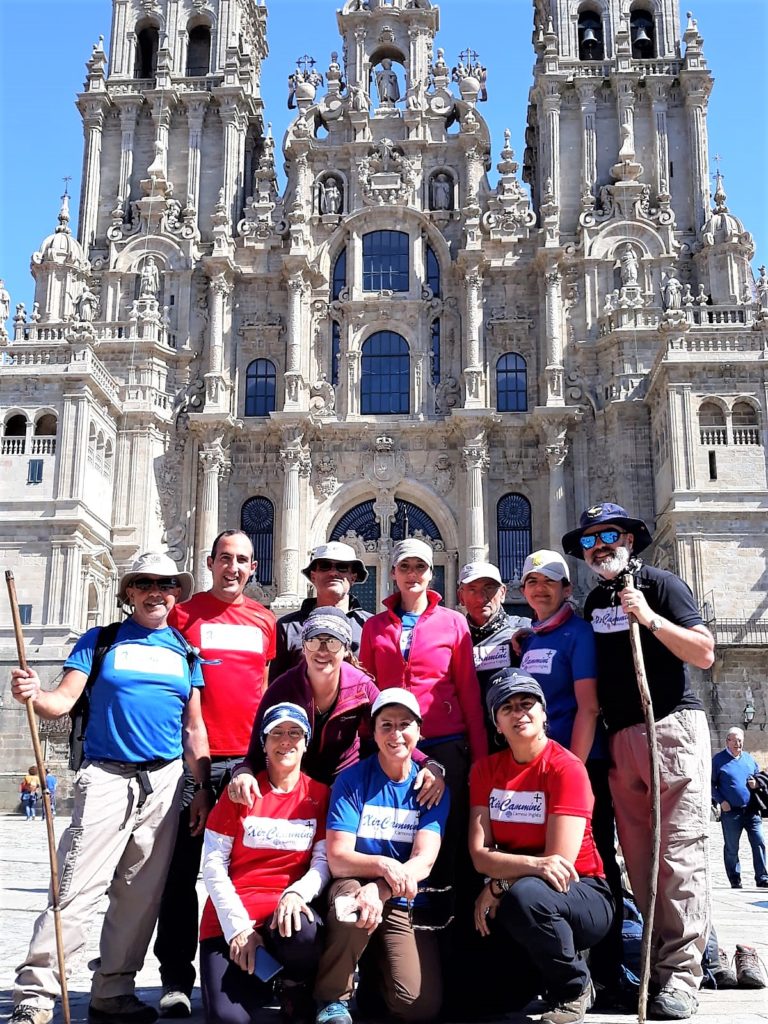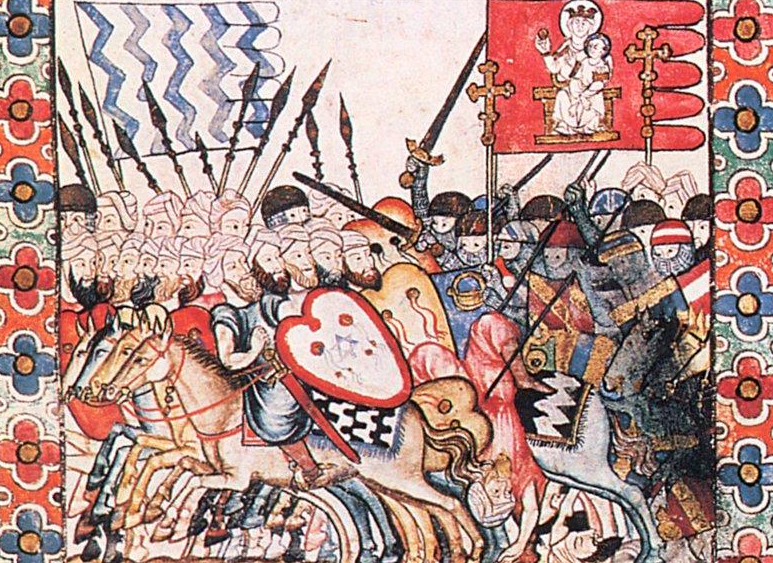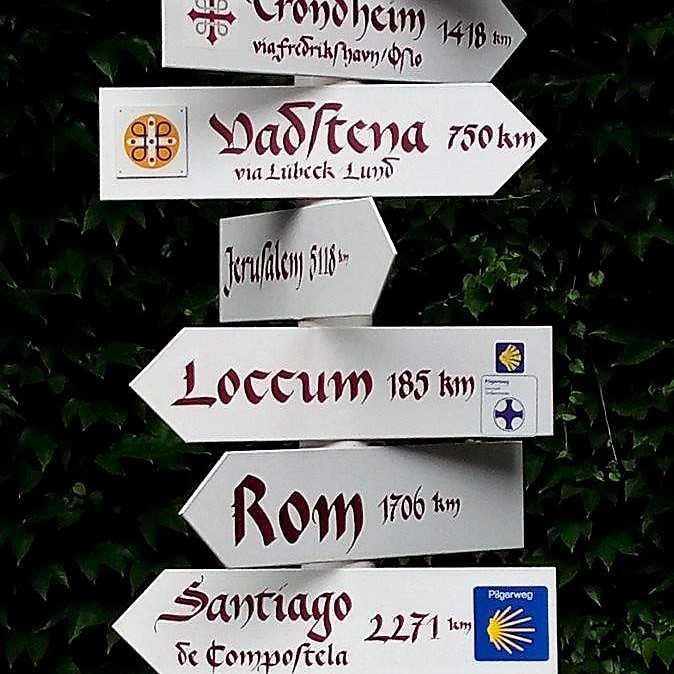With the Jubilee Year for Santiago de Compostela fast approaching the debate on whether there are any rules regarding the year (calendar or liturgical) that it should follow as well as other questions surrounding the topic.
The only ‘rule’ regarding the Años Xacobeos in Santiago is that it occurs when the feast of St. James falls on a Sunday. However, other Jubilee Years declared by the Catholic Church have also been observed in Santiago outside this rule, such as the Year of Mercy in 2016. ‘Jubilee’ is not with reference to an anniversary but to ‘iubilare’ meaning rejoicing.

The following is a ‘Jubilee Years 101’ in general with some specific reference to Santiago. St. James and/or the Camino where these cross paths:
- The Cathedral of Santiago de Compostela follows a Calendar year when it comes to the Years of Jubilee. The coming year’s (2021) may also be extended into 2022 as thanksgiving following the ordeals of this year.
- Jubilee years in general (unlike the one of Santiago) tend to follow a Liturgical year starting with the first Sunday of Advent and generally extending until Epiphany after the 2nd Christmas. It follows the ‘life-cycle’ of Jesus from the preparation of his coming on earth (Advent) until the preparation of the second coming (Christ the King, before the following Advent) and generally extending into the Christmas festivities beyond that until Epiphany. However, they do not necessarily follow this pattern. The 2000 Year of Mercy was inaugurated on Christmas Eve 1999 and the Doors of Mercy were closed on Epiphany of 2001.
- Historically, in Christianity Pope Boniface VIII instituted the Jubilee Year once every 100 years in the early 14th century and the event is intrinsically tied to pilgrims then visiting Rome. Its biblical basis is found in
- Leviticus (Hebrew: yōḇēl) where Jews declared a year of emancipation and restoration every ‘seven weeks of years’ (i.e. every 50 years not 100 years) where slaves were liberated and debtors freed from their debts; and
- Luke 4: 18-20: Recalling Jesus’ visit to the synagogue in Nazareth reading, “The Spirit of the Lord is on me, because he has anointed me, to proclaim good news to the poor. He has sent me to proclaim freedom for the prisoners and recovery of sight for the blind, to set the oppressed free, to proclaim the year of the Lord’s favour.” (Latin: Iubilare). According to the Catholic Church it is a time of spiritual indulgence and remission from sin and, hence, a period of jubilation (rejoicing) based on the ‘Joyful’ message of redemption in the above passage proclaimed by Jesus anointed to deliver us.
- Pope Boniface VIII probably instituted the Jubilee Year to generate money from pilgrims visiting Rome and also to garner support for the spiritual and, then also, temporal supremacy of the Papacy in the face of his on-going feud with Philip IV of France (who was heavily indebted to the Church and also to monastic chivalry orders). After Boniface death, Clement V was elected Pope through the connivance of Philip IV and – together – they crushed the Templars; ridding Philip IV of a substantial part of his debt. Pope Clement V’s appointment is of significance to the Camino de Santiago because Templar lands and properties along the Camino were transferred to the Knights Hospitalier of St. John of Jersulem and Rhodes (Later the Knights of Malta).
- Pope Clement VI changed the Jubilee Year from a once in 100 to once in 50 years’ event in the Papal Bull, Unigenitus.
- Towards the end of the 14th century, Pope Urbanus VI changed the cycle from 50 years to 33 years based on the earthly life of Christ.
- Pope Boniface IX published the Papal Bull Antiquorum habet fida relatio offering a pardon of all their sins for pilgrims visiting the basilicas of St. Peter and St. Paul in Rome, at least once a day (for thirty days in the case of inhabitants and 15 days for visiting pilgrims). 1400 was not really a ‘year of deliverance’ since a 2nd wave of the plague was killing over 500 pilgrims and inhabitants a day in Rome!
- While Pope Martin V in the early 15th century followed on the 33 year cycle, his successor Pope Nicholas V reverted to the the 50 year cycle and his successor – Pope Paul II – reduced it to a 25-year cycle which is still practiced in Rome until today. Because of wars in Europe at the time, the Pope also permitted Jubilee Years to be held in specific churches in one’s own country rather than in Rome. It is probably during the papacy of Martin V (or his successor Eugene IV) during the earlier part of the 15th century that the Jubilee Year in Santiago was instituted though it echoed the plenary indulgence granted by Calixtus II in 1122 to pilgrims visiting Santiago in the years when the Saint’s day fell on a Sunday. Pope Alexander II also earlier bestowed plenary indulgences in 1063 to Christians who came to Spain to fight against the ‘infidels’. The Reconquista continued in Spain until 1492.
- 1500 sees the start of the tradition of the ‘opening of the door of mercy’ (echoing Christ’s words, “I am the door…”. Pope Alexander VI (the notorious Papa Borgia) opened the door at St. Peter’s and designated cardinals to, simultaneously, open those of St. John Lateran, St. Maria Maggiore and St. Paul’s in Rome. An estimated 200,000 pilgrims were present in Rome for that Jubilee Year. Pope Alexander VI is also the Pope who entrusted the confraternity of the Knights of St. James (founded in Leon 1170) to the King Ferdinand the Catholic of Spain in 1492.

I hope you found this ‘Jubilee Year 101’ interesting. You can read more about the Jubilee Year and Holy Door in Santiago by following this link by Marly Camino:
